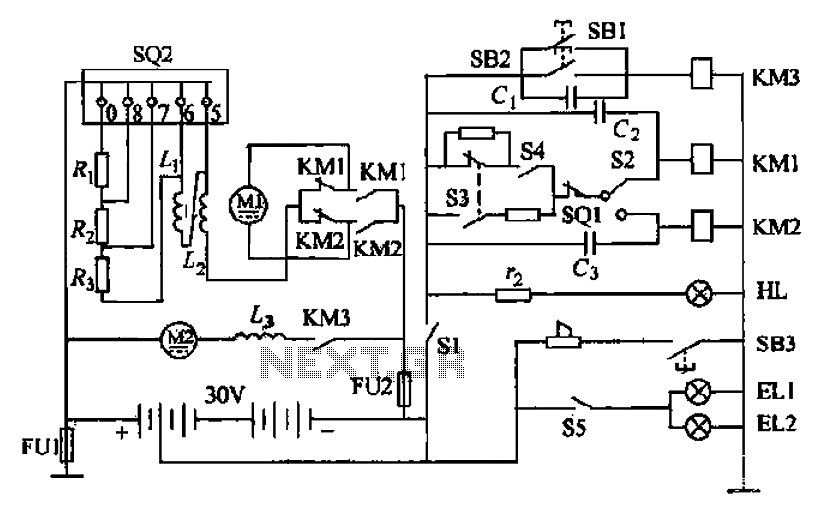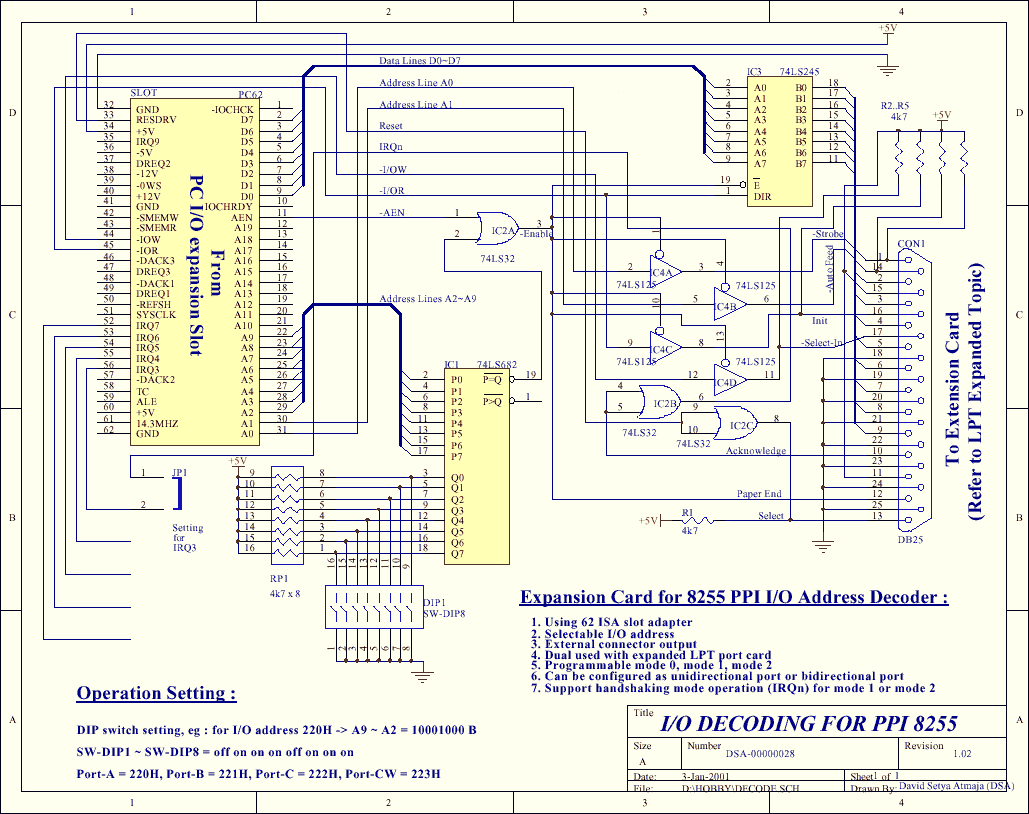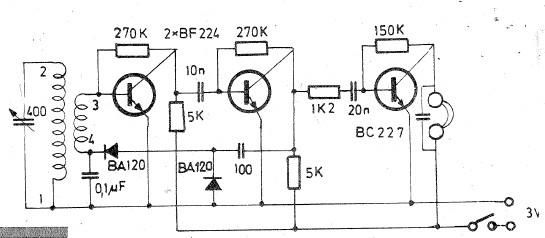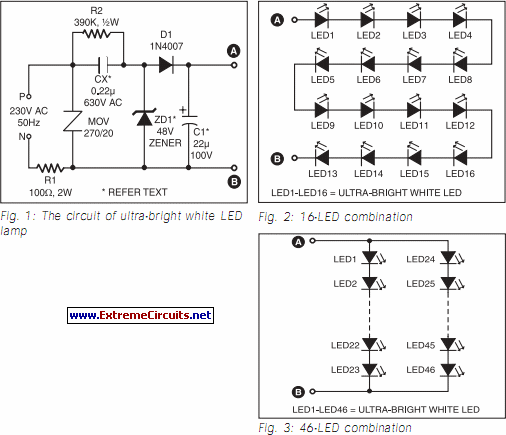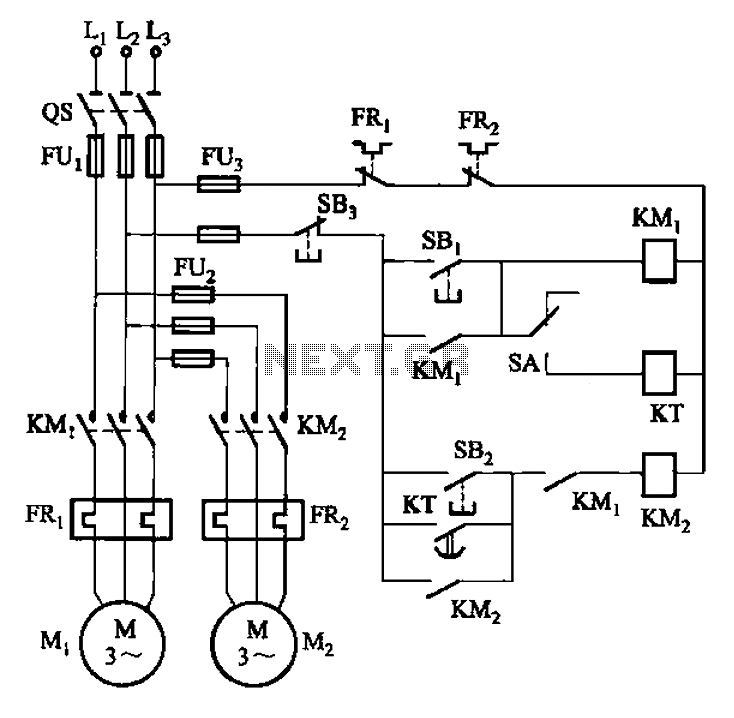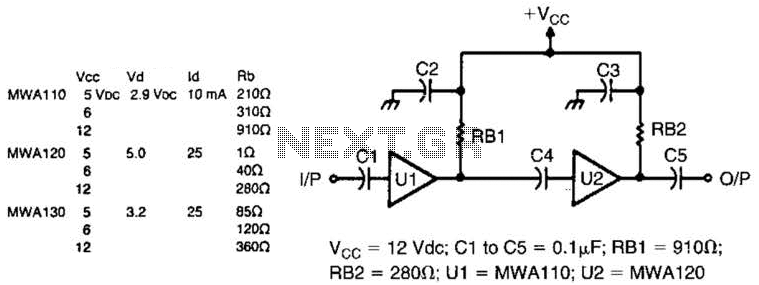
Equalization Circuit


2 versions of the equalization circuit, the first having 6 dB less insertion loss than the other. However, some may not be able to find a 0.68 microfarad capacitor. The second version uses a more common 0.22 microfarad capacitor. Both of these circuits operate to reduce the frequencies above 2 kHz with a 6 dB/oct slope until 15 kHz, where they turn flat once again. The source impedance will have a significant effect on the properties of the passive networks and should be less than 50 ohms. These circuits are only for the Beyerdynamic DT990 Pro headphones.
The equalization circuit designed for the Beyerdynamic DT990 Pro headphones consists of two versions, each addressing the frequency response of the headphones to enhance listening comfort. Version 1 is characterized by a lower insertion loss of 6 dB compared to Version 2, which utilizes a more readily available capacitor value of 0.22 microfarads instead of 0.68 microfarads found in the first version.
Both circuits function by attenuating frequencies above 2 kHz with a slope of 6 dB per octave until reaching 15 kHz, where the response flattens. This design is critical for users who find the treble frequencies too pronounced, allowing for a more balanced sound profile.
The circuit topology is primarily passive, relying on capacitors and resistors to shape the audio signal. The choice of components, particularly the capacitors, has a significant impact on performance. The 0.68 microfarad capacitor in Version 1 may not be widely available, which is why Version 2 offers a practical alternative with the 0.22 microfarad capacitor.
Furthermore, the source impedance plays a crucial role in the overall effectiveness of these circuits. It is recommended that the source impedance remains below 50 ohms to ensure optimal performance of the passive networks, as higher impedances could adversely affect frequency response and insertion loss.
The application of these circuits is specifically tailored for the Beyerdynamic DT990 Pro headphones, which are known for their pronounced bass response. Users who have modified their headphones with different ear pads, as noted in user experiences, may find these equalization circuits particularly beneficial in achieving a more balanced sound profile, reducing excessive bass or treble as needed.
In summary, these equalization circuits present a valuable tool for audiophiles seeking to customize their listening experience with the DT990 Pro headphones, allowing for adjustments that can enhance clarity and balance across the frequency spectrum.2 versions of the equalization circuit, the first having 6 db less insertion loss than the other. However, some may not be able to find a .68 microfarad capacitor. The second version uses a more common .22 microfarad capacitor. Both of these circuits operate to reduce the frequencies above 2 kHz with a 6db/oct slope until 15 kHz, where they turn flat once again. The source impedance will have a significant effect on the properties of the passive networks and should be less than 50 ohms.
These circuits are only for the beyerdynamic DT990 Pro headphones. I have bought my DT 990 (600 Ohm version) properly in 1986 or so, after reading a review in the German stereoplay magazine stating, that these were the best dynamic headphones. Well, I can’t remember what they sounded back than, but I do remember than someone noted that these headphones were pretty strong in the bass.
Actually, I do remember them sounding pretty heavy in the bass. After using them for some time, they ended up somewhere in a moving box and did not get pulled out until the mid 90’s, when I replaced the deteriorated ear pads with some artificial leather ear pads made by Beyerdynamic. At that time the DT 990 still sounded pretty heavy in the bass, so heavy that I thought that I needed an equalizer for these headphones, to turn down the bass and up the treble.
That was also the time I asked on AudioAsylum and HeadWize.com for some help. I was advised to buy the new gray velvet ear pads from Beyerdynamic, which I did. Well, I could not believe my ears after I changed the ear pads. The whole sound changed completely. Suddenly the bass was "almost" on the lean side, the mids where very airy and the highs very extended. So far so good. Except I started to realize, that the highs were too aggressive and too much and that this airiness was due to the access treble.
Another post on AudioAsylum and HeadWize got me into the right direction. I was directed to LXH2 article on HeadWize. After reading that, I build myself the equalization circuit version 1. Listening revealed right away, that the attenuation in the highs were way too much for my taste. So I decided to build another circuit, but this time I played around with different values in resistor and caps. I ended up changing C1 from 0.69 uf to 0.10 uF; and R1 stayed the same; R2 was eliminated and R3 remains 22 ohms.
Now I find that the DT 990 sound very balanced to my ears and I believe that they will give me many more hours of pleasure. After the mod I asked my wife to compare the DT 990’s with my old Stax SR-X headphones. Well, after switching back and forth she said: "The Beyerdynamic sound louder. Well, not in volume." After listening for myself again, I saw what she was hearing. There was a lot more "commotion" going on with the DT 990’s. The old Stax do sound more refined and cleaner. 🔗 External reference
The equalization circuit designed for the Beyerdynamic DT990 Pro headphones consists of two versions, each addressing the frequency response of the headphones to enhance listening comfort. Version 1 is characterized by a lower insertion loss of 6 dB compared to Version 2, which utilizes a more readily available capacitor value of 0.22 microfarads instead of 0.68 microfarads found in the first version.
Both circuits function by attenuating frequencies above 2 kHz with a slope of 6 dB per octave until reaching 15 kHz, where the response flattens. This design is critical for users who find the treble frequencies too pronounced, allowing for a more balanced sound profile.
The circuit topology is primarily passive, relying on capacitors and resistors to shape the audio signal. The choice of components, particularly the capacitors, has a significant impact on performance. The 0.68 microfarad capacitor in Version 1 may not be widely available, which is why Version 2 offers a practical alternative with the 0.22 microfarad capacitor.
Furthermore, the source impedance plays a crucial role in the overall effectiveness of these circuits. It is recommended that the source impedance remains below 50 ohms to ensure optimal performance of the passive networks, as higher impedances could adversely affect frequency response and insertion loss.
The application of these circuits is specifically tailored for the Beyerdynamic DT990 Pro headphones, which are known for their pronounced bass response. Users who have modified their headphones with different ear pads, as noted in user experiences, may find these equalization circuits particularly beneficial in achieving a more balanced sound profile, reducing excessive bass or treble as needed.
In summary, these equalization circuits present a valuable tool for audiophiles seeking to customize their listening experience with the DT990 Pro headphones, allowing for adjustments that can enhance clarity and balance across the frequency spectrum.2 versions of the equalization circuit, the first having 6 db less insertion loss than the other. However, some may not be able to find a .68 microfarad capacitor. The second version uses a more common .22 microfarad capacitor. Both of these circuits operate to reduce the frequencies above 2 kHz with a 6db/oct slope until 15 kHz, where they turn flat once again. The source impedance will have a significant effect on the properties of the passive networks and should be less than 50 ohms.
These circuits are only for the beyerdynamic DT990 Pro headphones. I have bought my DT 990 (600 Ohm version) properly in 1986 or so, after reading a review in the German stereoplay magazine stating, that these were the best dynamic headphones. Well, I can’t remember what they sounded back than, but I do remember than someone noted that these headphones were pretty strong in the bass.
Actually, I do remember them sounding pretty heavy in the bass. After using them for some time, they ended up somewhere in a moving box and did not get pulled out until the mid 90’s, when I replaced the deteriorated ear pads with some artificial leather ear pads made by Beyerdynamic. At that time the DT 990 still sounded pretty heavy in the bass, so heavy that I thought that I needed an equalizer for these headphones, to turn down the bass and up the treble.
That was also the time I asked on AudioAsylum and HeadWize.com for some help. I was advised to buy the new gray velvet ear pads from Beyerdynamic, which I did. Well, I could not believe my ears after I changed the ear pads. The whole sound changed completely. Suddenly the bass was "almost" on the lean side, the mids where very airy and the highs very extended. So far so good. Except I started to realize, that the highs were too aggressive and too much and that this airiness was due to the access treble.
Another post on AudioAsylum and HeadWize got me into the right direction. I was directed to LXH2 article on HeadWize. After reading that, I build myself the equalization circuit version 1. Listening revealed right away, that the attenuation in the highs were way too much for my taste. So I decided to build another circuit, but this time I played around with different values in resistor and caps. I ended up changing C1 from 0.69 uf to 0.10 uF; and R1 stayed the same; R2 was eliminated and R3 remains 22 ohms.
Now I find that the DT 990 sound very balanced to my ears and I believe that they will give me many more hours of pleasure. After the mod I asked my wife to compare the DT 990’s with my old Stax SR-X headphones. Well, after switching back and forth she said: "The Beyerdynamic sound louder. Well, not in volume." After listening for myself again, I saw what she was hearing. There was a lot more "commotion" going on with the DT 990’s. The old Stax do sound more refined and cleaner. 🔗 External reference
